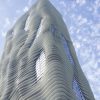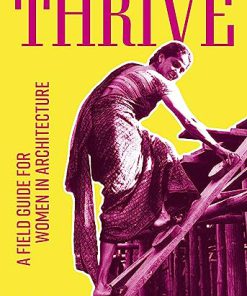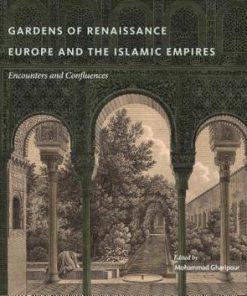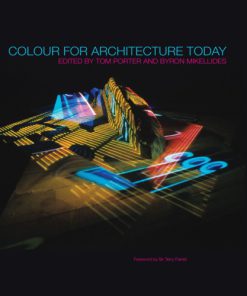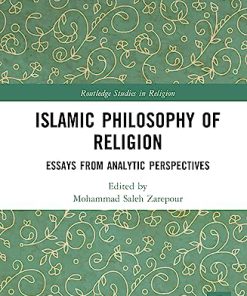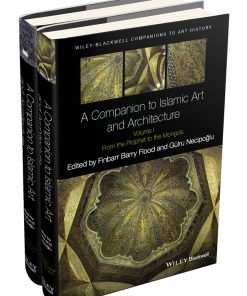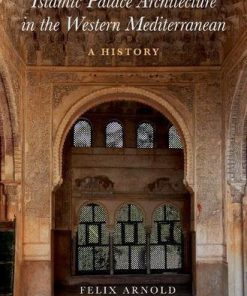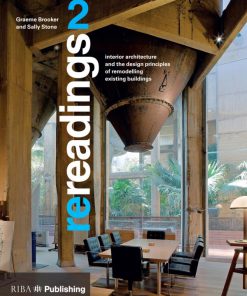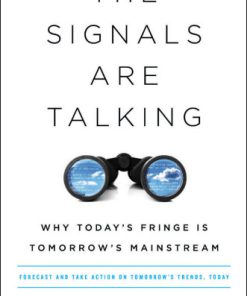Islamic Architecture Today and Tomorrow Re Defining the Field 1st Edition by Mohammad Gharipour, Daniel E. Coslett 1789386059 9781789386059
$50.00 Original price was: $50.00.$25.00Current price is: $25.00.
Islamic Architecture Today and Tomorrow Re Defining the Field 1st Edition by Mohammad Gharipour, Daniel E. Coslett – Ebook PDF Instant Download/Delivery: 1789386059, 9781789386059
Full download Islamic Architecture Today and Tomorrow Re Defining the Field 1st Edition after payment
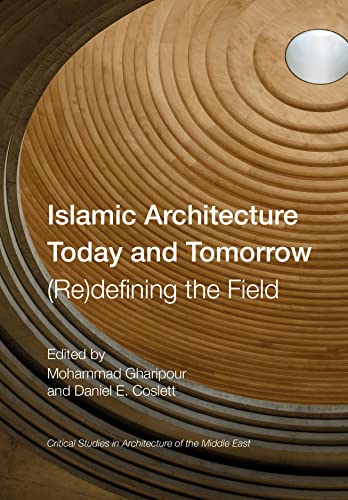
Product details:
ISBN 10: 1789386059
ISBN 13: 9781789386059
Author: Mohammad Gharipour, Daniel E. Coslett
Through Islamic Architecture Today and Tomorrow, established experts, designers, and newer scholars from the world of ‘Islamic architecture’, broadly conceived, consider the field’s changing nature and continued relevance in our rapidly globalizing context. Reflective essays address the meaning of ‘Islamic’ in built environments, as well as the geographical, chronological, and disciplinary diversity of a dynamic field of study that encompasses far more than mosques and tombs.
Islamic Architecture Today and Tomorrow Re Defining the Field 1st table of contents:
Part 1 Research and Scholarship
Chapter 1 The Study of Islamic Architecture: Reflections on an Expanding Field
Typology
Geography
Chronology
Technology
Methodology
Conclusion
Notes
Chapter 2 Widening the Horizons for the Study of Islamic Architecture
Without
Within
The Future
Notes
Chapter 3 Modern Architecture and Colonialism in the Islamic World
Initial Developments: Orientalism and After2
A Second Wave: Colonial Modernities
Conclusion: Current Challenges
Notes
Part 2 Scope and Scale
Chapter 4 From Garden to Landscape: Lessons from the Taj and the Alhambra
The Taj Mahal as Landscape
The Alhambra as Landscape
Conclusion
Notes
Chapter 5 Invisible Geographies in the Study of Islamic Architecture
Musholla in Alleyways
Hidden Intertwined Histories
Moving Geography
Conclusion
Acknowledgement
Note
Chapter 6 Silencing Palestinian Architectural History in Israel: Reflections on Scholarship and Acti
The Power to Silence
The Limits of Access
Activism and the Writing of History
Conclusion
Acknowledgements
Notes
Chapter 7 Islamic Architecture in the Americas: Advancing a Transregional and Hemispheric Approach
Foundations for Inquiry
From Historicist Approaches to Contemporary Designs
Comparative Case Study: The Brazil Mosque of São Paulo and Islamic Center of Washington
Conclusion: Hemispheric Insights and Possibilities
Notes
Part 3 Historiography and Context
Chapter 8 Cultural Encounters, Local Practice, and Historical Process in the Ancient Middle East
Notes
Chapter 9 Neo-Eurocentrism and Science: Implications for the Historiography of Islamic Art and Archi
Thresholds of Change and Neo-Eurocentrism
Neo-Eurocentrism and the Historiography of Science and Art
Neo-Eurocentrism and Cultural Relativity
Implications for Islamic Art and Architectural Historiography
Notes
Chapter 10 Carving an Epistemological Space for Southeast Asia: Historiographical and Critical Engag
Beyond Exceptionalism
Translation as Site of Inquiry: Buildings and/as Texts and the Architectural Dialectic
Capitals, Satellites, and Rural Sites in Post-imperial Contexts and Networks
An ‘Archipelagic Crossroads’: Beyond Singular Narratives
Beyond Stratigraphic Assumptions
Rooted Muslim Cosmopolitanisms and Their Limits
Museums, Archaeology, Regimes of Knowledge, and Prospects for Rapprochement
Acknowledgements
Notes
Part 4 Fieldwork and Documentation
Chapter 11 A Field without Fieldwork: Sustaining the Study of Islamic Architecture in the Twenty-Fir
The Question of Access
Working as an Islamicist
Sustaining Islamic Architectural History
Notes
Chapter 12 Architectural History in Turkey: Between Fieldwork and Archival Research
Fieldwork in the City
Archives in Turkey and Beyond
Conclusion
Acknowledgements
Notes
Chapter 13 Documenting Islamic Architecture: Objectives and Outcomes in a Time of War
Approaches
Digital Proliferation and the Role of Digital Humanities
Ethics and the Digital Divide
The Allure and its Challenges
Outcomes
Notes
Part 5 Education and Pedagogy
Chapter 14 Reorienting Perspectives: Why I Do Not Teach a Course Titled ‘Islamic Architecture’
‘Theory’ and Its Relevance to the Study of ‘Islamic Architecture’
Myths from the Classroom and Beyond
Remaining Critical Questions and Approaches
Instead of a Conclusion, Some Opinions on Teaching Architecture and a Student’s Response
Acknowledgements
Notes
Chapter 15 Decolonizing Architectural Knowledge: Situating Middle Eastern Pedagogies in a Globalizin
Contemporary Problematization
Questions Arise
Sustained Negative Idiosyncrasies
Appreciative Inquiry (AI): A Milieu for the Critical Thinker
Moving Forward with Responsive Approaches
Towards a Decolonized Architectural Education
Notes
Chapter 16 Educating the Public about Islamic Art and Architecture through Museums
Assessing the Audience
Beyond Labels: Public Programs and Outreach
Training
Conclusion
Coda: Islamic Art in Museums in the Era of COVID-19
Notes
Part 6 Curation and Publication
Chapter 17 Displaying Islamic Arts in Global Cities
On Context: Globalization, Orientalism, and Mobility
New Museums, Old Collections: The Resurgence of the Arts of Islam
Museology vs. Built Environment: Global Divergences
Notes
Chapter 18 Curating the ‘Islamic’: The Personal and the Political
The Hyper-local and the Personal
Context and Contextualization
Institutions and Exhibitions
Additional Platforms
Conclusion
Notes
Chapter 19 Islamic Architecture on the Move: Publishing Architectural History in the Digital Age
Early Forays into Digital Publishing: JSAH and AO
Ten Years Later
Looking Further Afield for Digital Engagement
The Digital in the Classroom
Opening Access
Notes
Chapter 20 Illustrating Islamic Architecture:: On Visual Presentation and Scholarship
Early Illustrations and Plans
Towards an Ever More Reliable Documentation?
Photography
Conceptual Approaches Versus Documentation
Conclusion: The Digital Turn
Notes
Part 7 Globalization and Change
Chapter 21 Uneven Geographies and Neoliberal Urban Transformation in Arab Cities
Manifestations of Neoliberal Urban Restructuring
From Real Estate Investments to City Infrastructure
Conclusion
Notes
Chapter 22 Affection for Nouvel Architecture: On Contemporary (Islamic) Architecture and Affect
Affect
Nouvel at Sharaan
Orientalizing the Scenography of Contemporary Architecture
Notes
Chapter 23 The ‘Islamic-Modern’ Project in this Age of Uncertainty
Bio-graph
A Post-humanist Cultural Imaginary
Acknowledgement
Notes
Part 8 Experience and Use
Chapter 24 The Tourist Gaze, Visiting Mosques, and the Folds of Architecture
Politics of Urban Preservation
The Tourist Gaze and Modernity
Two Views of Al-Azhar
Visiting Mosques and the Tourist Gaze
The Folds of Architecture
From Plurality to Pluralism
Notes
Chapter 25 Decolonizing the Conservation of Islamic Built Heritage in Egypt
The Colonial Roots of Today’s Practices
Premodern Practices
Developments in International Thought and Practice
Toward Decolonization
Conclusion
Notes
Chapter 26 (Dis)placement and Placemaking: Reconsidering Islamic Architecture through Refugee Agency
Agency and Placemaking: Displacing the Conventions of the Field
Concluding Thoughts: Islamic Architecture as a Critical Perspective in the Study of Place and Placem
Acknowledgement
Notes
Part 9 Practice and Profession
Chapter 27 ‘Islamic Architecture’ and the Profession
Note
Chapter 28 A Trinity of Values in Architecture for Muslim Societies
Architecture for Muslim Societies
Conclusion
Acknowledgements
Notes
Chapter 29 Relevance, Tradition, and Practice in Islamic Architecture
Modernity to Tradition: A Personal Journey
Lessons Learned and the Future of Islamic Architecture
Notes
Chapter 30 Architectural Competitions: Creating Dialogues and Promoting Excellence
Types of Competitions
The Players
Notes on Three Architectural Competitions
Why Enter Competitions?
Postscript
Notes
Contributor Biographies
People also search for Islamic Architecture Today and Tomorrow Re Defining the Field 1st:
islamic architecture today
islamic architecture timeline
islamic architecture time period
islamic architecture tower
islamic architecture history
Tags: Islamic Architecture, Tomorrow, the Field, Mohammad Gharipour, Daniel Coslett
You may also like…
Arts - Architecture
Arts - Architecture
Gardens of Renaissance Europe and the Islamic Empires Encounters and Confluences Mohammad Gharipour
Religion & Spirituality - Islam
Arts - Study & Teaching
Arts - Architecture
Islamic Palace Architecture in the Western Mediterranean : A History 1st Edition Felix Arnold
Arts - Architecture
Business & Economics



